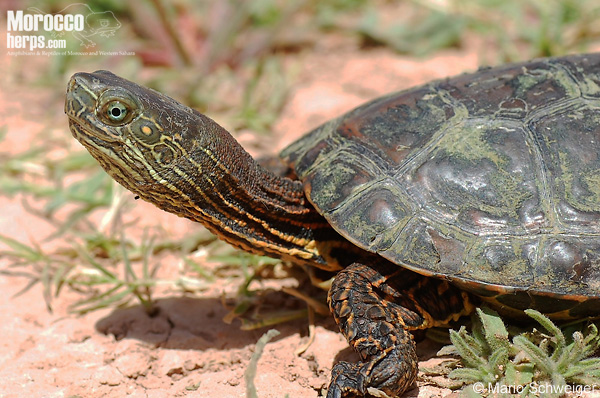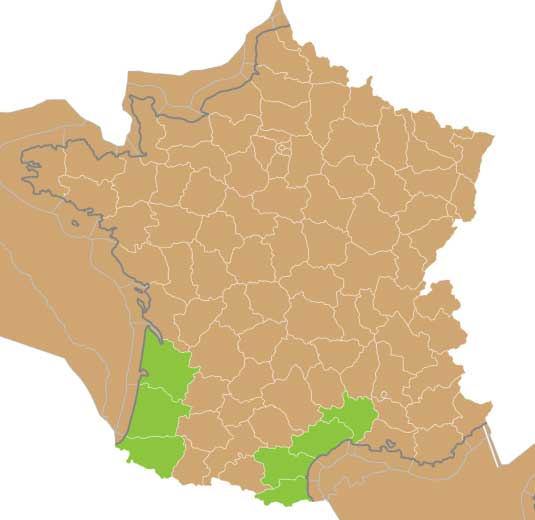Mediterranean pond turtle
Mauremys leprosa
Émyde lépreuse
The distribution area ofthe Mediterranean Pond Turtle covers a large part of Spain and Portugal, the north of the Maghreb countries, (Morocco, Algeria, Tunisia), and some very small numbers in France. (Languedoc-Roussillon, Pyrénées-Orientales and Aquitaine).
They are a small turtle, on average 15-16 cm for males and maximum 20 cm for females in France but can often be larger in North Africa. Their shell is olive green and relatively flat. The yellow iris is barred by a dark line and the neck, head, tail and limbs are marked with pale yellow longitudinal lines. Sexual maturity appears at around 4/5 years in males (length of the carapace about 90 mm) and 7/8 years in the females (length of the carapace 110 mm). Mating takes place in the water in the spring and the female lays between 3 to 12 eggs in the ground near the water from April to August and they can produce 2 broods.
They are a very fierce animal that is not always easy to observe, frequenting stagnant or slow-moving water, streams, rivers, ditches, canals. They tolerate a certain amount of organic contamination and can even be found in industrial areas and water treatment plants.
Their diet although omnivorous is in realty almost completely carnivorous and consists of molluscs, worms, insects, spiders, small fish, tadpoles and amphibians. They also consume aquatic plants but the vegetable fraction of their diet is quite small.
Potentially they hibernate from November to March, but this can vary throughout their range and may not occur at all in North Africa.
Lifespan in captivity is about 25 years but unlikely to be anything near that in the wild.
Threats:
They suffer predation from various mammals or birds such as weasels, wild boar, badgers, otters, corvids, storks, eagle owls etc both at the egg stage and when juvenile.
Loss or degradation of habitat – ponds, pools and watercourses and surrounding terrain for egg laying and hibernation.
Traffic collisions.
Capture and removal by people wanting them as pets.

